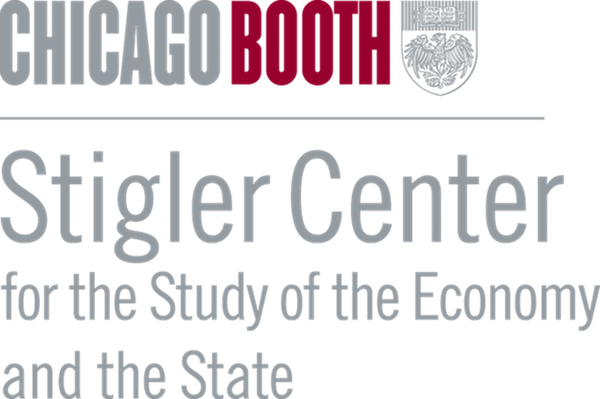A recently uncovered memo from George Stigler and Richard Posner reveals how they thought about antitrust and merger policy in advising the Reagan Administration.
A few years ago when doing research in the Reagan Presidential Library, I found a 1980 memo by George Stigler and Richard Posner. It was addressed to Martin Anderson of the Reagan transition team, and it laid out a series of recommendations to “throttle back” on antitrust enforcement without requesting any statutory changes from Congress.
This memo has stirred up debate. It gets to the heart of current debates about the direction of antitrust, specifically the effort to revise the merger guidelines this year.
My colleague Matt Stoller showed this memo as part of a surreptitious campaign to defang antitrust law through administrative choices, undermining the wishes of a democratically elected Congress. In response, Herbert Hovenkamp penned a ProMarket piece contending that the memo is primarily just a reflection of the ongoing evolution of antitrust thinking at the time. This is a substantial misrepresentation of what the memo itself said, how its writers framed their actions, and the context around it.
Stigler and Posner made a few main points:
- 1960s antitrust policy had gotten out of control, was overly aggressive, and prohibited efficient business practices, not limiting itself to prohibiting horizontal price-fixing and large horizontal mergers.
- Reagan had an opportunity to “prune” antitrust “without asking for new legislation.” They proposed Reagan select an Assistant Attorney General (AAG) for Antitrust who would limit enforcement, including by revising merger guidelines and “raising the threshold market share percentages at which the Department will challenge horizontal mergers and abolishing the vertical and conglomerate prohibitions in the Guidelines.”
- They knew this would be unpopular with the public and Congress, fully expecting that, if the Democrats won the Senate, the AAG would be “hauled before the Judiciary Committee to explain his outrageous conduct.”
Hovenkamp asserts that the memo was probably not a game-changer. He asserts that changes in antitrust policy initiated with the Nixon Administration. He asserts that Stigler and Posner were not intending a simple reduction in antitrust, because at the micro-level there needed to be more enforcement in the recently deregulated industries. These arguments, true or not, are mostly beside the point.
The main source of the disagreement is the 1982 merger guidelines rewrite, which was the basis of Stoller’s original claim of conspiracy. Yet Hovenkamp acknowledges that this memo may have influenced Reagan’s revision of the guidelines. After casting the memo as unimportant, he closes noting that it “clearly could have influenced some Reagan administration antitrust policies.” Which policies? “One was the 1982 revision of the Government’s Merger Guidelines.”
That’s the whole point. While Stoller’s claim of a conspiracy might be hyperbolic, it is not clear where Hovenkamp factually finds any disagreement with the potential influence of the memo on the merger guidelines.
Furthermore, the broader context does not support Hovenkamp’s interpretation of gradual continuation of policy from Nixon. Stigler and Posner’s proposal may have been, in their view, “the economic consensus position,” but it was far outside of any consensus position more generally, especially since they anticipated the AAG being “hauled before the Judiciary Committee to explain his outrageous conduct” if Democrats won the Senate.
On top of the anticipated congressional furor, here is a different memo I found of a Reagan advisor considering codifying the 1982 guidelines into statute, and in which they were rather pessimistic about its chances on the Hill. If they thought they were faithfully enforcing the Clayton Act, why would they consider spending political resources to change it?
In 1985, the Department of Commerce Office of General Council advocated repealing Section 7 because the new guidelines were not following the Clayton Act as it was written: “In enacting Clayton 7 and the Celler-Kefauver amendments, Congress chose an economic policy which declared that ‘big is bad’ while ‘small and many is good’ … Even mergers and acquisitions which were likely to generate important efficiencies were condemned by the federal courts under Clayton 7. Economic efficiencies (and thus ultimately consumer welfare) were sacrificed in order to preserve large numbers of small domestic firms.”
A 1985 Reagan Antitrust Review Group noted that “future Administrations may attempt to return to the overly-restrictive policies that are permitted under the incipiency standard and try to convince the courts to follow their lead. In view of the fact that antitrust enforcement policies and judicial doctrine have substantially changed, there is a very significant chance that this could occur.” The review group also stated, “federal courts can refuse–and in two recent instances have refused–to follow the Guidelines and have blocked mergers approved by the Antitrust Division and the FTC under the Guidelines.”
There is much more documentation of this. Reagan officials knew their revised guidelines were out of step with the original intent of the Clayton Act, Congressional understanding of its purpose, judicial precedent, and popular sentiment, and they were deeply worried about subsequent administrations reverting to policy that faithfully reflected those things.
Beyond the specifics, Hovenkamp appears to be defending a particular narrative about antitrust history that the memo undermines. Popular among mainstream antitrust practitioners today, in this narrative antitrust had gotten out of control in the 1960s, with economically illiterate enforcers routinely bringing cases against efficient business practices. However, beginning in the early 1970s, economically minded jurists began to introduce rational, economic thinking into antitrust, shifting the policy consensus towards more restrained but better regulation. Or so goes the story.
Stigler and Posner were early advocates of this narrative about 1960s antitrust. However, as shown in the memo, rather than reflecting a meaningful consensus, their proposed course of action was partisan, knowingly out of line with existing congressional understandings of policy, and subversion of the generally understood intent and meaning of the Clayton Act at the time.
This version of antitrust history also takes a lot for granted that is relevant to potential changes to the merger guidelines today. On what basis had antitrust lost its way in the 1960s? Were those decisions and enforcement actions procedurally invalid? Is this narrative pointing to concrete and harmful economic results because of antitrust policy choices?
In terms of procedure, the statutes in question were passed by legislative majorities and signed by the President. The Clayton Act, whose enforcement is usually the target of the most ire, was passed in 1914 and amended in 1950. Initially, courts interpreted it based on close fidelity to the Congressional intent and record.
In terms of their economic results, the shared criticisms from Hovenkamp, Stigler, and Posner—against decisions like Brown Shoe, Philadelphia National Bank, Schwinn, Vons Grocery, and others—are not based on empirical evidence that those decisions harmed American economic performance, growth, competitiveness, wages, prices, investment, or some other beneficial economic outcome. In fact, American prices were quite low compared to the rest of the world at the time. What evidence exists would indicate that the higher relative prices since are mainly padding the profit margins of producers. Economic growth—in absolute terms, in terms of total factor productivity, or in terms of labor productivity—has been marginally slower. Corporate investment has been lower, technological advances are far more marginal, wages are growing more slowly, and the labor share of income has declined. These trends have many drivers beyond antitrust, but the general economic results cannot be marshaled to support the notion that antitrust “had lost its way” in the late 1960s and recovered it since.
It appears more that Stigler, Posner, and Hovenkamp disapprove of the style of reasoning that cases like Brown Shoe employed. Viewed through the lens of price theory, the decision-making process promoted inefficiencies, prohibited efficient and beneficial practices, and defended a political priority set by Congress about preserving a certain market structure. Yet the issue is less that policy at the time actually prevented efficiencies in a way that had been meaningfully tested or measured. If that were the primary issue, I would think that they would be primarily relying on statistical or empirical evidence about the effects of those policies. The issue appears to be that those decisions thought about efficiency as secondary to other values or priorities, like a preferred form of industrial organization or straightforward law enforcement, and other ways of thinking, like the practical effectiveness of bright-line rules.
The Clayton Act’s merger provisions do not mention prices, efficiencies, or consumer welfare. Even if the Sherman Act was motivated by such a way of thinking about economic theory, the Clayton Act was not, and Reagan’s enforcers were well aware. The microeconomic way of thinking about law, policy, and regulation only came into fashion in policy circles in the 1960s and 1970s. Yet based on this new way of thinking, a narrow group of policymakers sought to throw out an entire body of policy as illegitimate, regardless of congress or democratic input. Hovenkamp’s arguments primarily serve to obfuscate that.
Read more about our disclosure policy here.






